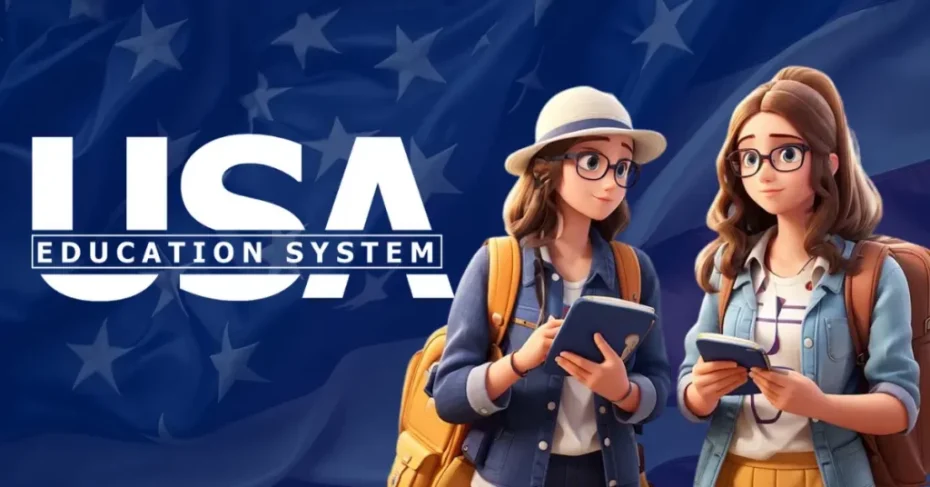The education system in the United States is one of the most complex and diverse in the world, serving millions of students across public and private institutions. However, despite its strengths, the system faces numerous challenges that affect the quality of education and equal opportunities for all students. In this article, we will examine the key challenges in the education system in the United States and explore potential reforms that could address these issues and enhance the learning experience for students nationwide.
The Diversity of the Education System in the United States
One of the defining features of the education system in the United States is its diversity. The system is comprised of over 13,000 school districts, each with varying educational policies and funding. Additionally, the U.S. has a wide array of educational institutions, including public and private schools, charter schools, and homeschooling programs. This diversity provides unique learning opportunities but also contributes to disparities in educational outcomes, particularly across different socio-economic and racial groups.
The decentralized nature of the system allows for localized decision-making, which can be a strength, but it also leads to significant disparities in resources and educational quality. For example, students in wealthier areas often have access to better facilities, technology, and extracurricular programs compared to those in low-income areas. These inequalities contribute to an achievement gap that affects student success and future opportunities. For more details on how the achievement gap impacts students, check out this article.
Funding Inequities in the Education System
One of the most pressing issues within the education system in the United States is the inequitable distribution of funding. Public schools are primarily funded by local property taxes, which means that wealthier communities can allocate more resources to their schools, while poorer areas struggle to provide basic educational needs. This funding model has led to stark disparities in the quality of education offered across the country.
Students in underfunded schools may lack access to modern technology, well-trained teachers, and extracurricular programs. On the other hand, students in wealthier districts may benefit from smaller class sizes, advanced courses, and better facilities. Addressing this funding gap is critical for ensuring that every child has access to a high-quality education, regardless of their background or location. For more information on education funding, visit The Education Trust.
Standardized Testing and Its Impact
Standardized testing is another controversial issue in the education system in the United States. While tests like the SAT and ACT are intended to assess students’ academic skills and readiness for college, many educators and parents argue that they do not fully capture a student’s abilities or potential. Additionally, there is growing concern that an overemphasis on standardized tests leads to teaching to the test, rather than fostering critical thinking and creativity.
Furthermore, standardized tests often exacerbate existing inequalities, as students from disadvantaged backgrounds may not have the same access to test prep resources as their wealthier peers. This can contribute to the achievement gap, where students in low-income areas consistently perform worse on standardized tests than those in more affluent districts. For an in-depth look at the role of standardized testing in education, check out FairTest.
Opportunities for Reform: A Focus on Equity and Personalization
Despite these challenges, there are several opportunities for reform in the education system in the United States. One key area of focus is improving educational equity. Efforts to close the funding gap between districts, increase access to quality early childhood education, and address disparities in school discipline can help ensure that all students have the opportunity to succeed.
Personalized learning is another promising reform. Advances in technology, such as Artificial Intelligence (AI) and adaptive learning platforms, can help tailor educational experiences to the individual needs of students. Personalized learning allows students to progress at their own pace, offering more support where needed and challenging them in areas where they excel. This approach can help bridge the achievement gap and provide students with a more engaging and relevant education. Learn more about personalized learning at Edutopia.
Moreover, there is increasing interest in expanding access to vocational and technical education. While college is an important path for many students, not all young people are interested in or suited for a traditional four-year degree. Expanding vocational programs can provide students with the skills needed to enter high-demand fields like healthcare, technology, and skilled trades. The National Center for Education Statistics provides valuable insights on vocational education in the U.S.
The Role of Teachers and Professional Development
Teachers are the backbone of the education system in the United States, and reforming the system must include improving teacher preparation, support, and professional development. Teachers need access to ongoing training and resources to effectively teach in a rapidly changing educational landscape. Providing teachers with better salaries, professional development opportunities, and resources for classroom innovation is essential for creating a positive learning environment.
Furthermore, addressing teacher shortages in certain subject areas and regions, such as STEM (Science, Technology, Engineering, and Mathematics) education, can help ensure that students receive a high-quality education. Supporting teachers, both in terms of professional development and compensation, will improve the overall quality of education in the U.S. For more on teacher shortages and development, visit The Learning Policy Institute.
Conclusion
The education system in the United States is at a crossroads, facing significant challenges but also offering vast opportunities for reform. Addressing issues such as funding inequities, the overemphasis on standardized testing, and disparities in access to resources is crucial for creating a more equitable system. By focusing on personalized learning, teacher support, and expanding access to vocational education, the U.S. can create an education system that better serves all students and prepares them for success in an ever-changing world.
















